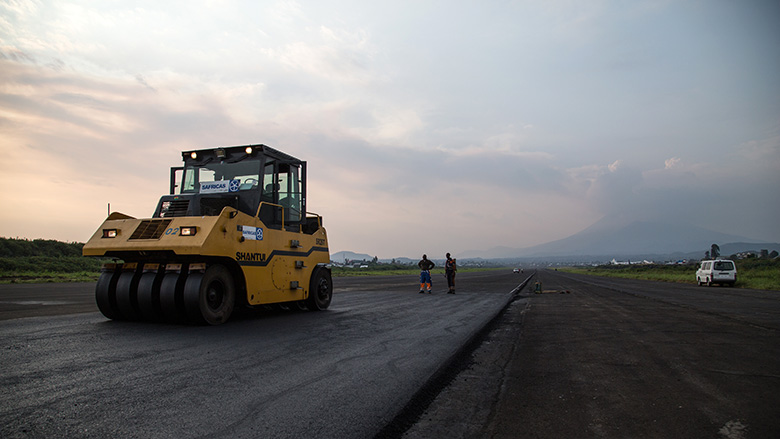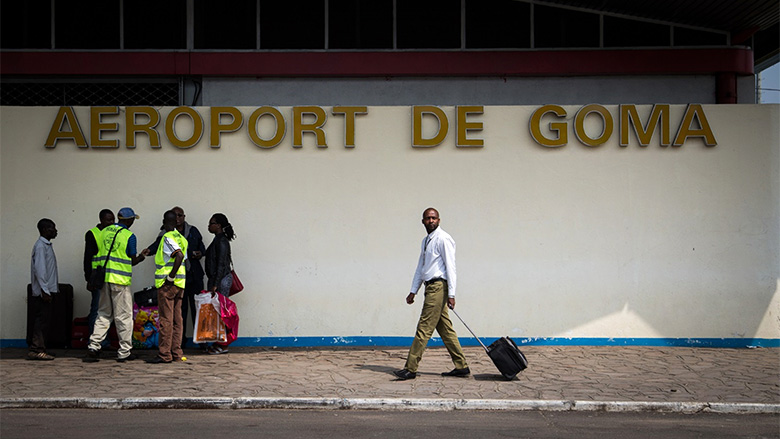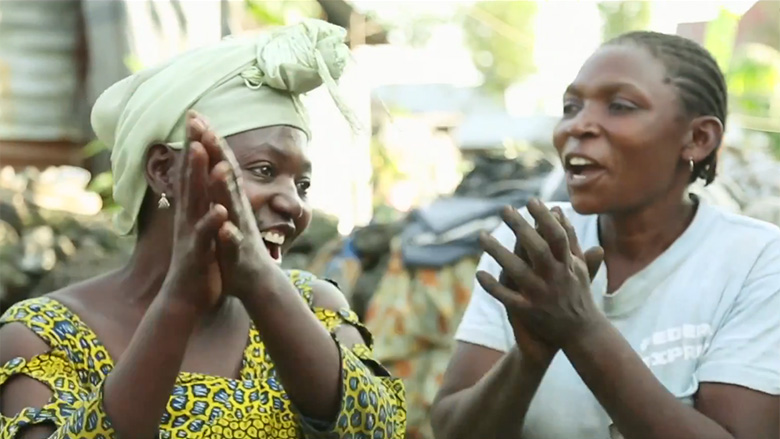What is the Goma Airport Safety Improvement Project?
The Goma Airport Safety Improvement Project, funded by a US $52 million grant from the World Bank in support of the government’s drive for the re-establishment of safe and secure operations of Goma International Airport, aims to break the isolation of this region of the DRC. The grant is in addition to earlier support from the German government provided in 2009 to DRC to mitigate the impacts on Goma of the lava flow from the 2002 volcanic eruption.
The project’s objective is to improve the safety, security, and operations of Goma International Airport, vital to ongoing peace efforts in Eastern DRC. The project has two components:
Component A focuses on investments necessary to urgently enable Goma International Airport to meet international safety and security standards, and to bring its capacity to the level prior to the 2002 volcanic eruption:
- the rehabilitation of the existing runway
- the rehabilitation and extension of the existing apron
- the rehabilitation of the airport’s electrical systems
- the supply and installation of a new mobile control tower
- the supply and installation of equipment to upgrade air navigation aids
- the erection of the airport’s security fence
- the rehabilitation of the existing internal service road
- the support to airport rescue and firefighting services
- the rehabilitation of the existing passenger terminal
- the laying-out of a cargo area
- the implementation of the Environmental and Social Management Plan
Component B focuses on capacity building and project implementation support. It includes activities necessary to support the institutional development of Goma airport, share lessons learned with other key airports in DRC, mitigate the risks associated with the volcanic activities in the area, promote interventions to provide social dividends to surrounding communities in this conflict-affected area, and ensure appropriate project implementation:
- the preparation of a priority airport rehabilitation program in DRC including technical assistance to prepare a rehabilitation program benefiting a priority list of national airports
- the monitoring of volcano risks and the strengthening of the preparedness of the Goma International Airport and surrounding communities, including the provision of technical assistance, equipment, training, and operating costs to Goma Volcanic Observatory
- the strengthening of the economic and social fabric of the communities around the Goma International Airport through: (i) a feasibility study, with special attention to gender issues and vulnerable groups, on labor-intensive activities including the identification of the demand for by-products of basalt rock and the logistics of such activities; and (ii) operational procedures and partnerships for such activities based on the results of said feasibility study
- an effective and efficient project implementation, including: (i) the provision of goods, consultant services, training and operating costs to support project coordination, implementation, management, auditing, and monitoring and evaluation; and (ii) adequate budget allocations to project management.


